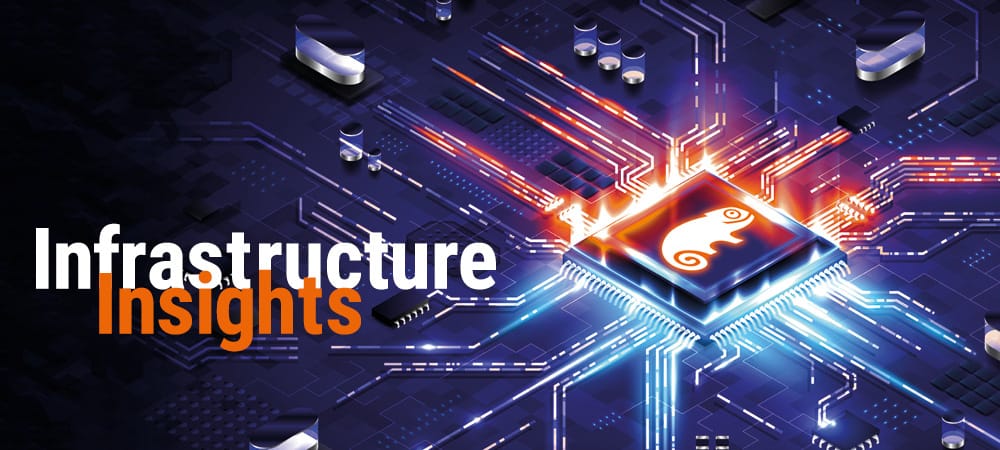From Threats to Regulations to Resilience


What began as a technical experiment in the 1980s is now a shadow industry worth billions: cybercrime. In recent decades, attackers have professionalized, globalized and strategically shifted their targets - to where the critical data is located. And that is exactly where SAP is located.
SAP systems are the digital backbone of most companies. They store confidential customer data, control supply chains and calculate financial figures. This central role makes them a prime target for attack. Studies by SAPinsider and ENISA show: Unpatched systems, a lack of export controls, credential leaks and shadow certificates are often among the biggest risks that go unnoticed.
SAP as a critical core: complexity meets responsibility
In practice, IT departments encounter highly complex SAP landscapes that have grown over the years:
- On-premise systems with individual configurations
- Cloud or RISE environments with new operating models
- Hybrid landscapes in which data, users and processes are distributed across multiple levels
- Different release statuses, security levels, databases and operating systems
Technically demanding and organizationally challenging.
Traditional SAP operations are manual, time-consuming, reactive and are increasingly reaching their limits. Maintenance windows are tight. Systems must be available around the clock. SAP teams are often understaffed and different operating teams (SAP Basis, OS, database, security, application) work in separate silos with different priorities, tools and objectives.
It becomes particularly critical when tasks are located at interfaces. Who takes care of expiring certificates? Who documents security-relevant changes? These questions often lead to delays and misunderstandings. There is also a structural problem: many things work "somehow" - but without governance. A lack of transparency, incomprehensible workflows and manual processes make audits more difficult, jeopardize compliance and lead to a latent security risk.
SAP systems have long since ceased to be purely technical platforms. They are business-critical assets that belong under special protection as part of the digital backbone of a company. However, many organizations have so far lacked a holistic view of security, operation and compliance in the SAP context. This is where a modern understanding of SmartSecOps comes in - as a connecting link for responsibilities, automation and resilience.
Regulation under pressure
With the new NIS2 directive, the EU is setting clear cybersecurity requirements for organizations in critical and important sectors, regardless of industry or IT structure. For many organizations, this means a fundamental reassessment of their existing security and operational processes, especially in the SAP environment.
But NIS2 is not alone: DORA (for the financial sector) and the General Data Protection Regulation (GDPR) are also increasing the pressure on IT teams to act. While GDPR requires the protection of personal data and DORA regulates the resilience of digital financial infrastructures, NIS2 particularly demands technical and organizational measures to maintain system availability, incident response and governance. It is often not clear at first glance what the specific obligations are, who in the company is affected and how the regulatory puzzle can be meaningfully integrated into ongoing operations.
The puzzle of requirements: Gaps in SAP environments
SAP managers are faced with a puzzle of individual solutions, rules and tasks. Each piece is important in itself - but without connections, no picture emerges:
- Certificates expire unnoticed because they have to be maintained manually
- Patches are not applied on time for resource reasons
- Data exports such as Excel or PDF leave SAP unprotected
- Security audits are time-consuming, incomplete and reactive
- Manual activities block valuable time
A concrete example: an internal audit reveals that several productive SAP systems are being operated with expired root certificates. The renewal takes days because every step has to be initiated and documented manually. This shows how important automated security operations are when they are structured and set up system-wide.
The biggest pain points in SAP operations
Many people know the theory: apply patches, renew certificates in good time, protect data exports. In practice, however, this is where the biggest weaknesses are found and this is reflected in recent studies. According to an SAPinsider benchmark analysis, 35 percent of companies see security notes and patches as the biggest challenge. No wonder: tightly scheduled maintenance windows, a lack of resources and uncertainty as to whether a patch has been applied correctly lead to dangerous backlogs.
A single unpatched system can be enough to open a gateway for attackers. Another underestimated risk is certificate management. Expired or incorrectly configured certificates not only block interfaces, but can also paralyze entire processes. In many companies, certificates are still monitored manually in Excel lists. As a result, critical renewals are overlooked.
And there is also a dangerous blind spot when it comes to data exports. Studies confirm that data exfiltration is the number one threat to SAP systems today. As soon as sensitive information leaves an SAP system, companies often lose control: files end up unencrypted on end devices, are sent by email or stored in cloud folders. This is a red flag for regulators such as NIS2 or DORA. Nothing less than the protection of business-critical data along the entire process chain is at stake here.
It is precisely at this point that the current regulations become tangible. Both NIS2 and DORA make it clear that the protection of critical data must not end at the edge of the system. While NIS2 requires companies across all industries to report security incidents within 24 hours and provide verifiable documentation, especially in the event of data loss, DORA goes even further: it stipulates digital business resilience tests (TLPT) that also take into account the outflow of sensitive data via SAP interfaces or exports.
This means that every unprotected Excel report or every unencrypted file from SAP is not only a technical risk, but can also result in compliance violations, liability issues and high fines in the event of an emergency.
For companies, this means that the protection of data exports is becoming a touchstone of their entire security and compliance strategy. Failure to do so not only jeopardizes their own IT landscape, but also risks reputational damage, legal consequences and a loss of trust among customers and partners.
The automation platform for SAP security and compliance
The SmartSecOps Platform from automatics.AI provides the answer to this challenge. It combines SAP operations, IT security and compliance in a holistic automation approach - modular in design and fully integrable.
At its heart are five specialized hubs:
- OperationHub: Start, stop, patching and parameter management across all SAP instances
- LifecycleHub: Automated certificate management, SAP Notes handling, support package updates
- TransparencyHub: Complete compliance monitoring from audit logs to interface control
- SecurityHub: Protection of sensitive data through encryption, export control and Microsoft Purview integration
- RefreshHub: Automated SAP system and client copies and flexible pre/post workflows
The platform is not only designed for homogeneous S/4HANA landscapes, but also supports hybrid scenarios, legacy systems and SAP BTP.
Why "Automated. Protected. Smart." is more than just a slogan
automatics.AI pursues a clear vision: Automate SAP operations intelligently, securely and scalably and consistently apply zero-trust data protection to every file.
We are convinced that the SAP operations of tomorrow will not only be resilient, but also human-centered. Routine activities need to be automated so that IT teams can regain the freedom to focus on innovation, architecture and strategy. With over 20 years of SAP operations experience, international locations and a platform that is consistently geared towards zero trust and automation, automatics.AI stands for a new generation of SAP operations - away from silos and towards genuine end-to-end processes.
Rethinking SAP security - with resilience as the goal.
In a world where attacks happen faster than patches are implemented, new security approaches are needed: Automated. Predictive. Resilient.
The SmartSecOps Platform from automatics.AI delivers exactly that: A technological answer to today's strategic challenges for SAP environments that can be operated in a future-proof, compliant and efficient manner.
Visit www.automatics.ai and discover how modern SAP security, compliance and operations are thought through holistically and implemented automatically - practical, scalable and measurable.






